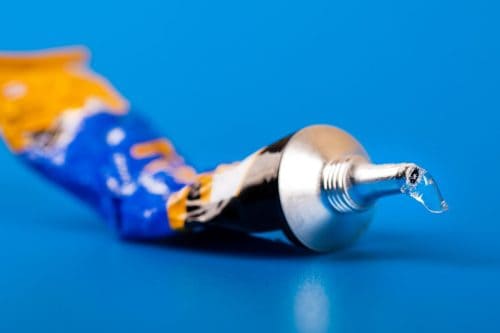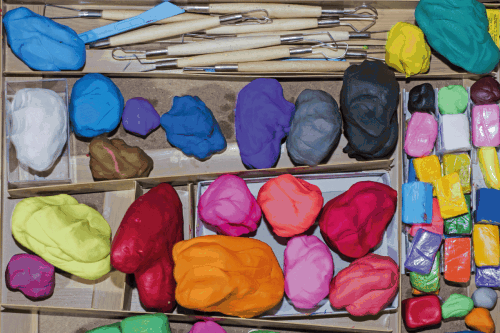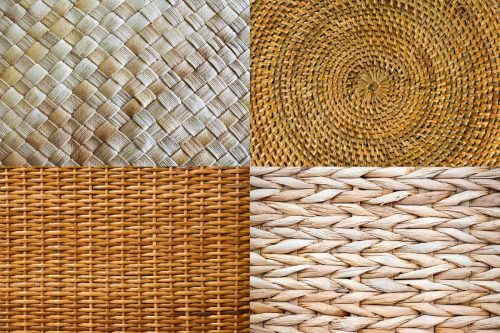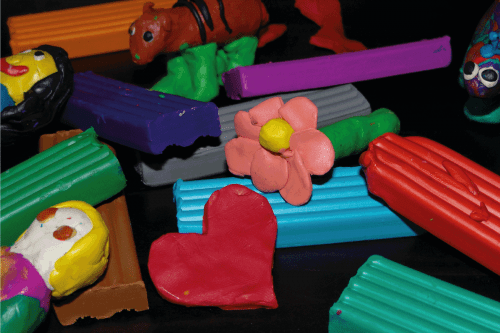Painting with watercolor is an enjoyable activity. However, did you wonder if there are shortcuts to make the paint dry faster between layers, or because you are anxious to frame your artwork once dry? We researched how long it takes watercolor to dry on paper, taking into consideration humidity, paper quality, and water amounts. Read on to learn more about this elegant and versatile medium.
When using watercolor paint on paper, expect it to dry in a minute to 15 minutes in a dry room. But, if there is humidity and the ambient temperature is cool, watercolor may need a few hours to dry. Using a significant amount of water to create a 'wash' with watercolor paint will also increase the drying time. A thicker watercolor paper may take longer to dry because it will absorb more of the medium versus painting on thinner paper.
The techniques you use to achieve various effects with watercolor impact how long it takes your artwork to dry. If you are curious about manipulating the drying time with watercolor paint, continue reading.

Understanding Watercolor As a Medium
If you are interested in using watercolor paint, you are indulging in a practice dating since the Neolithic age of ancient humans. Watercolor painting has come a long way, as today's modern artists can use watercolor pigments in trays, tubes, or pencil form. Following the excitement of creating artwork with this fast-working medium, it is good to learn how long it takes this medium to dry.
Learn to control your medium and get comfortable practicing using watercolor paint with different brushes, techniques, and different weights of watercolor paper. Depending on how much water you use with your pigment, the number of layers you apply to your paper, and the humidity will impact drying time. In a cool, dry environment with little humidity, watercolor paint can dry in a minute to 15 minutes. Humidity and using lots of water can lead to watercolor needing some hours to thoroughly dry.
Watercolor Techniques
When you are making a watercolor artwork, it is critical to understand how you manipulate the medium on paper. The amount of water used to create a smooth gradient of color on paper via a 'wash' will determine the drying time. Working on a painting in a humid room will also increase your drying time compared to a cool, dry day. An artist must practice their technique to achieve mastery and better judge when the paint is dry.
Most watercolor techniques require putting water on the paper first before adding the pigment and then moving quickly to create a subject with or without visible brushstrokes. Artists may also use a dry brush technique, placing the medium on the paper and then adding water later. When creating a wash, typically, the pigment is mixed with a set amount of water and applied to the paper.
Making Your Art Medium Work
Gathering the right tools for the job will help make creating a watercolor painting a pleasurable experience. It can be frustrating when an artist uses improper paper that buckles, or when inexpensive paint leaves a chalky or rough look. Watercolor paint is meant to be worked quickly, and you can achieve beautiful results using layers of paint. If you want to get your paint to dry quickly, allow it to dry in a sunny place, use a handheld blow dryer on the cool setting, or control your water and choice of painting techniques.
Keep paper towels handy, use a scratch sheet to test out your water ratio, and practice often. You may desire to get your painting to dry quickly if you need to have it framed for an art show, as a gift for a friend, or to add to your art gallery. Practicing your technique and becoming more familiar with watercolor pigments will help you judge drying time. Prep your paper, allow your paint layers to dry before adding a new one, and have fun experimenting and learning.
How Can You Make Watercolor Dry Faster?
There are more than a few ways to speed up the drying process for a watercolor painting. If you are waiting on a layer to hurry along, pull out a handheld blow dryer. Set the blow dryer to a cool or warm setting, not hot, and hold it at least 10 inches away from your painting. Use a uniform sweeping motion and don't linger in one spot, or you might get uneven areas.
Another method is to gingerly apply a paper towel to an area with excess pools of water. Allow the paper towel to barely touch the painting but soak up unwanted water, but be mindful not to destroy your work. A clean, dry natural-haired brush can also be used to soak up extra moisture. If you work in an area with a sunny window, you can leave your painting exposed for a short while to dry it naturally.
Check out this Conair handheld blow dryer on Amazon.
Check out this Komorebi Japanese watercolor set on Amazon.
Check out this Winsor & Newton watercolor set on Amazon.
How Long Does it Take for Watercolor to Dry on Canvas?
Typically, watercolor paper is the ideal medium for creating a painting with watercolor pigment. However, if you choose to paint with watercolor on canvas, it will need to be prepared with gesso and an appropriate ground. Applying enough layers of gesso and a ground for watercolor is essential so that the watercolor paint will stay put. Give watercolor anywhere from a few hours to a full 24 hours to dry between layers on canvas, depending on how it looks and feels.
Check out this ground for watercolor on Amazon.
Check out this gesso primer for a canvas on Amazon.
Check out this value set of canvas panels on Amazon.
How Do You Preserve Watercolor on Paper?
A beautiful watercolor painting can immediately elevate your home when displayed on the wall, so why not preserve it for generations? You can protect a watercolor painting that you created using a sealer and having it framed professionally. The choice of framing materials, how often your painting is exposed to UV light, and your level of investment will decide your artwork's future.
Before applying a spray-on sealer, varnish, or gloss to ensure your watercolor pigment adheres to the paper, make sure it is completely dry. While you wait to frame your artwork, keep it safe in a portfolio case, poly sleeve, or in a flat-file out of the light. Once your artwork is properly framed and ready to display, you should routinely rotate your artwork to protect it. Exposure to UV light, intense indoor lighting, and improper handling can damage the pigments. A cheap DIY frame job may not adequately filter light or allow dust, debris, or pests to harm your work.
Check out this Canson watercolor paper on Amazon.
Check out this Krylon sealer and protectant for art on Amazon.
Conclusion
Painting with watercolor has been practiced since ancient times, and the medium is fast-drying and easy to use. Practice painting with watercolor using varying brushes, techniques, and amounts of water to familiarize yourself with average drying times. Cool, dry environments will help your medium dry faster, especially if you use little to no water. Using a lot of water when applying a wash to paper, painting on canvas, or working with watercolor in a humid environment will increase the drying time.
Give your watercolor paint an average of 5 to 15 minutes to dry for each layer, adding more time if there is a significant amount of water. When in doubt, give each layer of watercolor paint a few hours to thoroughly dry before adding more pigment to your artwork. The painting should have a more matte appearance when it is dry. Choose to protect your art investment by framing your artwork professionally and applying quality sealers. Enjoy creating beautiful results with watercolor pigment, experimenting with techniques, and practicing often!










![Read more about the article 8 Best Sewing Machine Oils [Incld. Safe Alternatives To Sewing Machine Oil]](https://craftsbliss.com/wp-content/uploads/2020/11/A-man-pouring-oil-into-the-sewing-machine-to-lubricate-it-1-500x333.jpg)



